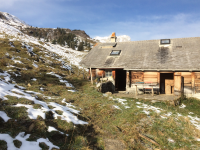I knew the voyageurs carried a bit of weight, but I'm reading Adney and Chapelle's "The Bark Canoes and Skin Boats of North America" and this description really drove it home.
"The term pacton was applied to the packs made up ready for portage; they were ordinarily made up of two or more packages, so the weight carried was at the very least 180 pounds. No self-respecting voyageur would carry less, as it would be disgraceful to be so weak. The pacton was carried by means of a collier, or tump-line similar to that used to portage canoes. .....The pacton was lifted and placed so that it rested in the small of the carrier's back with its weight borne by the hips. The ends of the collier were tied to the pacton so as to hold it in place, with the broad central band around the the carrier's forehead. On top of the pacton was placed a loose package, cassette, or perhaps a keg. The total load amounted to 270 pounds on average if the trail was good; the maximum on record is 630 pounds. With his body leaning forward to support the load, the carrier sprang forward in a quick trot, using short, quick paces, and moved at about 5 miles an hour over a good trail. A carrier was expected to make more than one trip over the portage, as a rule."
But don't try this at home...
"The traditional picture of the fur-trade voyageur as a happy, carefree adventurer was hardly a true one, at least in the 19th century. With poor food hastily prepared, back-breaking loads, and continual exposure, his lot was a very hard one at best. The monstrous packs usually brought physical injury and the working life of a packer was very short."
"The term pacton was applied to the packs made up ready for portage; they were ordinarily made up of two or more packages, so the weight carried was at the very least 180 pounds. No self-respecting voyageur would carry less, as it would be disgraceful to be so weak. The pacton was carried by means of a collier, or tump-line similar to that used to portage canoes. .....The pacton was lifted and placed so that it rested in the small of the carrier's back with its weight borne by the hips. The ends of the collier were tied to the pacton so as to hold it in place, with the broad central band around the the carrier's forehead. On top of the pacton was placed a loose package, cassette, or perhaps a keg. The total load amounted to 270 pounds on average if the trail was good; the maximum on record is 630 pounds. With his body leaning forward to support the load, the carrier sprang forward in a quick trot, using short, quick paces, and moved at about 5 miles an hour over a good trail. A carrier was expected to make more than one trip over the portage, as a rule."
But don't try this at home...
"The traditional picture of the fur-trade voyageur as a happy, carefree adventurer was hardly a true one, at least in the 19th century. With poor food hastily prepared, back-breaking loads, and continual exposure, his lot was a very hard one at best. The monstrous packs usually brought physical injury and the working life of a packer was very short."



![20211231_213345[1].jpg 20211231_213345[1].jpg](https://www.canoetripping.net/data/attachments/19/19302-63067921d16ce9422c2660f54eec3479.jpg?hash=YwZ5IdFs6U)
